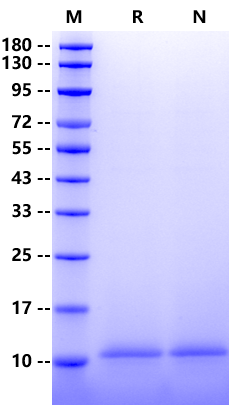

 下载产品说明书
下载产品说明书 用小程序,查商品更便捷
用小程序,查商品更便捷



 收藏
收藏
 对比
对比 咨询
咨询











IP-10 (Interferon gamma-induced protein 10 or CXCL10) is a proinflammatory cytokine that is secreted by various cell types in response to stimuli such as IFN-γ and LPS. It binds to CXCR3 receptor and regulates chemotaxis, apoptosis, growth, and angiostasis of immune cells. IP-10 is involved in the pathogenesis of many inflammatory disorders, such as autoimmune diseases, HIV infection, and tumour growth. CXCL10 is the chemokine released in highest quantities by islets immediately following islet perfusion in the transplant procedure, as identified by serum samples from 34 patients undergoing islet transplantion. Inflammatory mediators such as physical and chemical stress by isolation and infusion procedures stimulate the release of CXCL10 through an NFAT-MAPK signaling pathway. In particular, interferon-γ release at high concentrations during islet infusion contributes to the stimulation of CXCL10 and the loss of up to 50% of the islet graft immediately following transplant.


· 3 months, -20 to -80℃ under sterile conditions after reconstitution.
· 1 week, 2 to 8℃ under sterile conditions after reconstitution.
· Please avoid repeated freeze-thaw cycles.
1、Swaminathan G J. et al. (2003) Crystal structures of oligomeric forms of the IP-10/CXCL10 chemokine. Structure. 11(5): 521-532.
2、Booth V. et al. (2002) The CXCR3 binding chemokine IP-10/CXCL10: structure and receptor interactions. Biochemistry. 41(33): 10418-10425.

参考图片
1μg (R: reducing condition, N: non-reducing condition).







 危险品化学品经营许可证(不带存储) 许可证编号:沪(杨)应急管危经许[2022]202944(QY)
危险品化学品经营许可证(不带存储) 许可证编号:沪(杨)应急管危经许[2022]202944(QY)  营业执照(三证合一)
营业执照(三证合一)